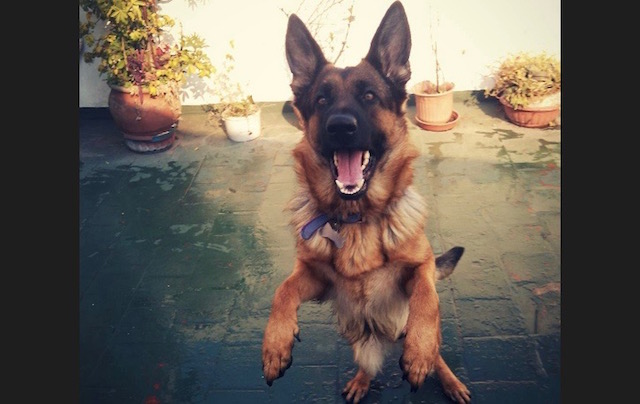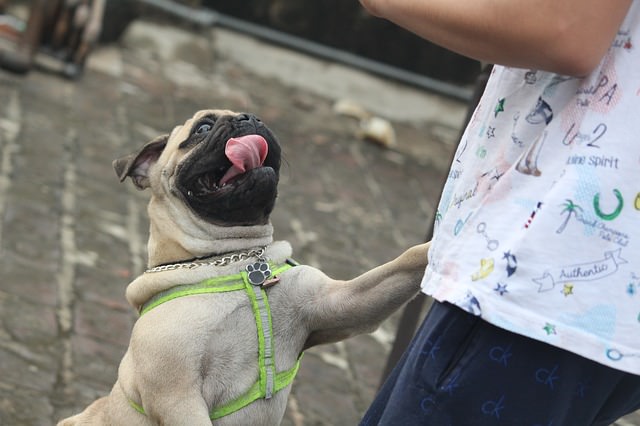Everyone that has ever met a dog has been jumped on. Puppies do it almost reflexively and it is a behavior that seems to be present in most dogs and must be trained away and replaced with something else. Animals do things for a reason (even if that reason is merely that they like it). I think that there is more to jumping up than just a bad habit. It might help to try to see the world through a dog’s eyes.

Dogs live in family groups. Such groups are natural to our dogs. They have adapted to our world and have slid neatly into our family groups. They have learned some of our human words and do their best to read our body language while sending their own body language cues. But we have a “language barrier” because dogs communicate with facial expressions and cues instead of spoken words.
Think about how people seem to a dog. Humans are tall. Dogs are used to seeing their friends eye to eye (usually). Some dogs are tall and some are not because of breed differences, but most humans are taller than the average dog. Dogs accept us for who we are and seem open-minded about our differences in anatomy, but it is odd to him for you to stand up on your hind legs all the time. Everything you do might seem peculiar to him. He knows that your mouth speaks to him and your face is where your personality is expressed. Dogs like to interact with one another face to face. In the wild, canines gaze into each other’s eyes and lick each other’s faces to communicate, but your face is just up so high!

Your dog wants to tell you things and he wants to understand what you are saying to him, but he cannot read your face when it is above his eye level. He does what he can to get there. It is important to realize that even when jumping on you is irritating (and in some cases, like elderly or very young humans, can be dangerous), it is your dog’s method of trying to read your cues and facial expressions and it comes naturally to him.
If you do not like the behavior and want to retrain it, you can use motivators (like treats and praise) to reinforce other behaviors. For example, if you know that your dog jumps on you when you first enter a room, ask him to sit and when he does, you reward that behavior. Because the jumping is often an excited attempt to communicate with you, it should not be difficult to redirect, although it may require some patience and consistency to reliably replace this natural response all the time. Don’t give up and always remember that punishment is not an effective training method because it damages your dog’s trust in you. Putting yourself in your dog’s shoes to examine unwanted behaviors makes it easier to be patient as you retrain them.

Give your best friend the benefit of doubt in everything she does and if you can’t figure out a reason, it is important to ask your veterinarian. Sometimes the reasons are related to medical issues and you might need some help.
